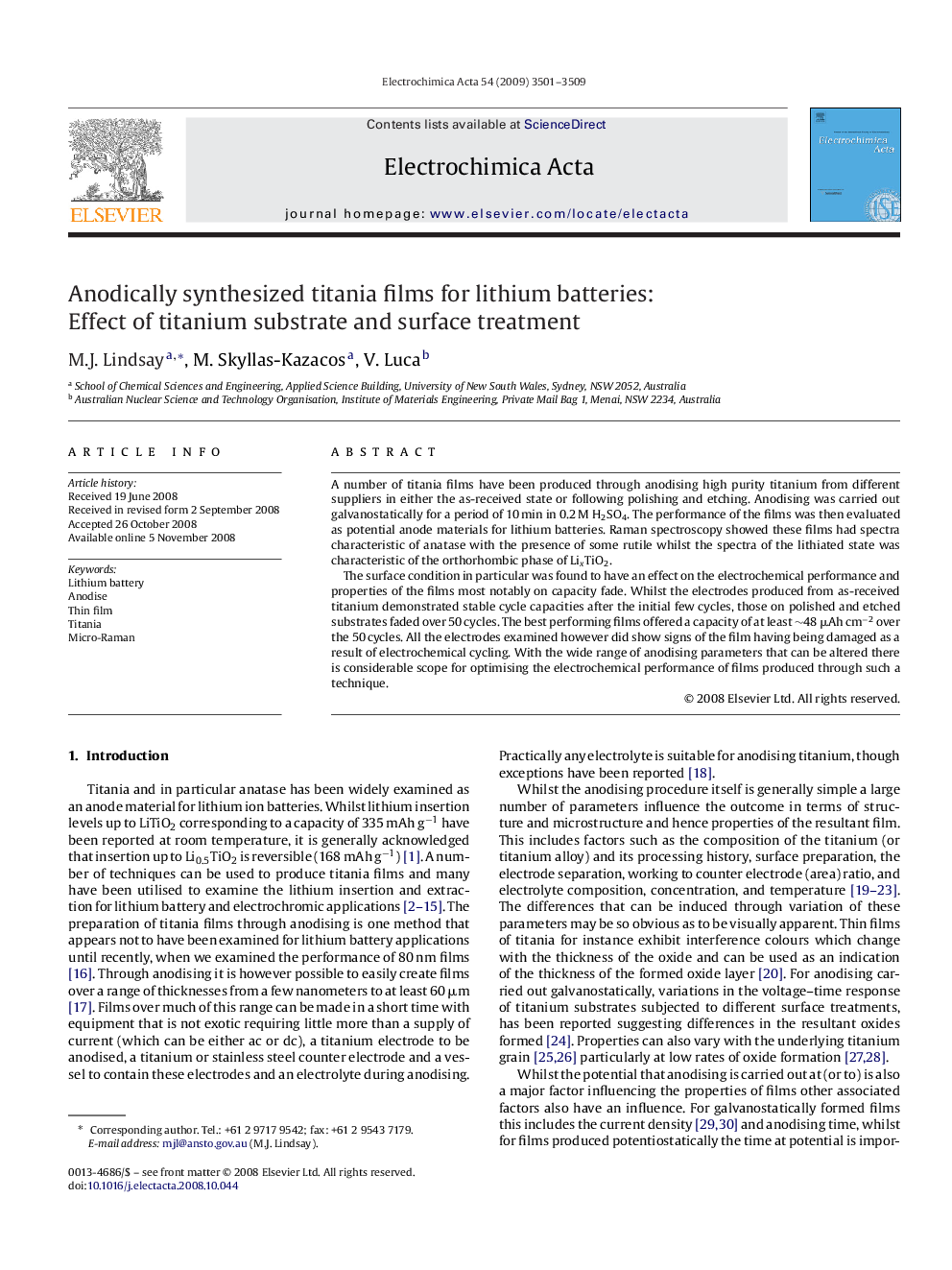| Article ID | Journal | Published Year | Pages | File Type |
|---|---|---|---|---|
| 193056 | Electrochimica Acta | 2009 | 9 Pages |
A number of titania films have been produced through anodising high purity titanium from different suppliers in either the as-received state or following polishing and etching. Anodising was carried out galvanostatically for a period of 10 min in 0.2 M H2SO4. The performance of the films was then evaluated as potential anode materials for lithium batteries. Raman spectroscopy showed these films had spectra characteristic of anatase with the presence of some rutile whilst the spectra of the lithiated state was characteristic of the orthorhombic phase of LixTiO2.The surface condition in particular was found to have an effect on the electrochemical performance and properties of the films most notably on capacity fade. Whilst the electrodes produced from as-received titanium demonstrated stable cycle capacities after the initial few cycles, those on polished and etched substrates faded over 50 cycles. The best performing films offered a capacity of at least ∼48 μAh cm−2 over the 50 cycles. All the electrodes examined however did show signs of the film having being damaged as a result of electrochemical cycling. With the wide range of anodising parameters that can be altered there is considerable scope for optimising the electrochemical performance of films produced through such a technique.
